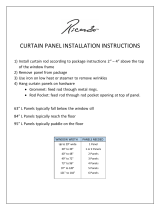
— 18 —
FLIGHT TYPE DISHWASHERS
PUMP MOTOR CHECK
After all electrical connections have been made,
check to ensure the pump motor is turning in the
proper direction. To check the motor’s direction,
perform the following:
1. Close the Drain Valve Foot levers for all the
tanks.
2. Turn the main power to the dishwasher ON.
3. On the Main Electrical Control Box, turn
the SAFETY Switch to the ON position.
4. If so equipped, depress the RESET button
located on the Main Electrical Control Box.
5. Press the FILL button to fill the dishwasher
with water.
NOTE: The Conveyor Peg Belt will start from
any START Switch located on the dishwasher.
6. When the dishwasher stops filling with
water, depress the START Switch.
7. Check that the pumps are running in the
correct direction per the arrow decals
attached to the pumps.
8. Proceed as follows:
a.`If the rotation direction is correct, turn
the SAFETY Switch to the OFF position.
b. If the rotation is reversed:
1 Turn the SAFETY Switch to the
OFF position.
2 Perform the ELECTRICAL
LOCKOUT/TAGOUT procedure.
3 Gain access to the main power
incoming electrical leads in the
mounted circuit breaker box.
4 Disconnect and reverse any two of
the incoming power wires on the
distribution block.
5 Secure all electrical connections
and access panels.
6 Repeat steps 2 through 7 to verify
the pumps are rotating in the correct
direction before proceeding.
CONVEYOR BELT TENSION CHECK
NOTE: Properly adjusted V-belts should slip
on the pulleys when a reasonable amount of
force is applied (approximately 100 pounds)
against the conveyor peg belts travel.
Check Conveyor Peg Belt tension as follows:
1. While positioned at the load section,
CAREFULLY try to stop the belt with
both hands while the Conveyor Peg Belt
is in motion.
2. Proceed as follows:
a. If an excessive amount of force is
required or if the belt would not slip
when force is applied against the
Conveyor Peg Belt travel, proceed to
V-BELT TENSION ADJUSTMENT.
b. If a minimal amount of force was
required or if the belt would not rotate
at all, proceed to V-BELT TENSION
ADJUSTMENT.
c. If the Conveyor Peg Belt slips when a
reasonable amount of force is applied
against it (approximately 100 lbs), the
V-belt tension is properly adjusted.
Perform the following:
1 Turn the SAFETY Switch to the OFF
position or press the STOP button.
2 Reinstall the load end access panels,
table and enclosure panels removed
during the INSTALLATION section.
3 Reinstall the unload end access
panels, table and enclosure panels
removed during the INSTALLATION
section.
4 Reinstall the main dishwasher
section access panels, water line
and enclosure panels removed
during the INSTALLATION section.
ADJUSTMENTS AND TESTS
























